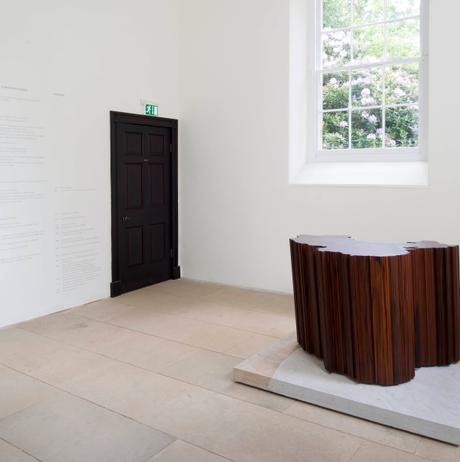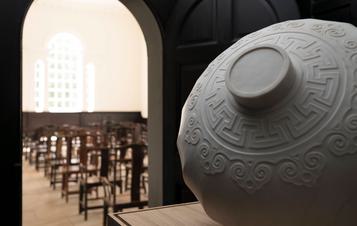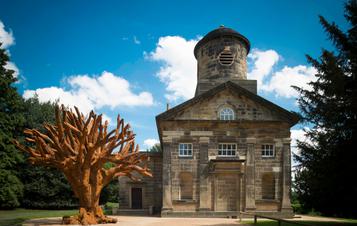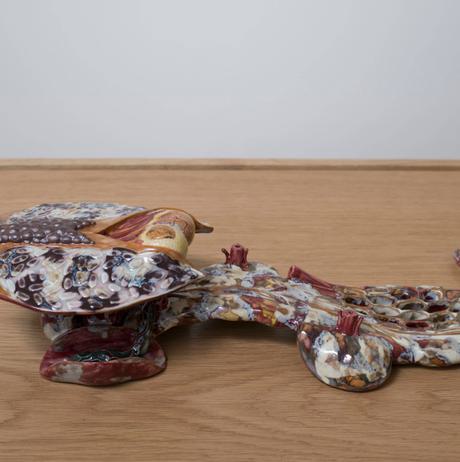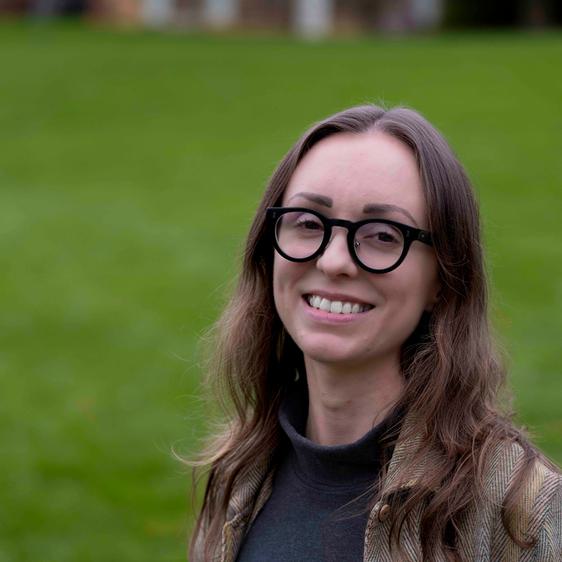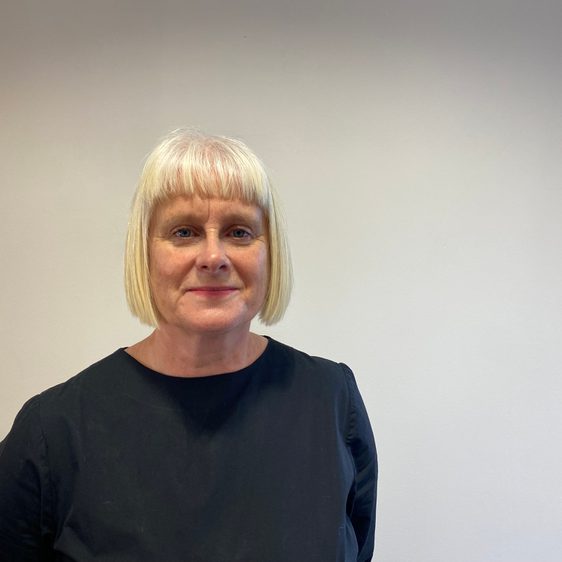
About Ai Weiwei in the Chapel
... A truly magical artistic moment
- The Sunday Times: Culture
YSP presented an exhibition by Ai Weiwei in the Park's newly refurbished 18th century chapel. The project, the first by Ai Weiwei in a British public gallery since Sunflower Seeds at Tate Modern in 2010, was accompanied by poetry readings from the works of celebrated poet Ai Qing, Ai Weiwei’s father.
Iron Tree, 2013, a majestic six-metre high sculpture is presented in the chapel courtyard, while the installation Fairytale-1001 Chairs, 2007-14, is shown inside the chapel with three other works: the porcelain Ruyi, 2012; marble sculpture, Lantern, 2014; and Map of China, 2009. The sculptures shown within the chapel relate to ideas about freedom and to the individual within society, whilst also connecting with the history and character of the building.
Iron Tree is the largest and most complex sculpture to date in the artist’s tree series, which he began in 2009. Inspired by the wood sold by street vendors in Jingdezhen, southern China, Ai’s trees are constructed from branches, roots and trunks from different trees. Although like a living tree in form, the sculptures are obviously pieced and joined together, being all the more poignant for their lack of life.
The second part of the exhibition, Fairytale-1001 Chairs, extends Ai’s major project for Documenta 12 in Kassel in 2007, for which he brought 1,001 Chinese citizens to Kassel for 20 days, representing each person with an antique chair. This transformational experience highlighted the complications of travel for ordinary Chinese citizens. Since his arrest in 2011, Ai’s own travel has been strictly limited and his passport is currently confiscated.
Unable to travel to Yorkshire for this exhibition, and working from plans and photographs of YSP’s chapel, Ai selected 45 Fairytale-1001 Chairs and conceived an installation of nine rows of five chairs in the nave. Spaced so that each chair is solitary, they gave heightened awareness of the collective and the individual.

Ai selected two other works for the chapel. Ruyi translates to “as one wishes” and so alludes to wish-fulfilment. Sitting somewhere between fungal organic form and human internal organs, this lividly-coloured porcelain sculpture is one of a number of Ruyi made by Ai Weiwei that take the traditional Chinese sceptre of the same name, used by nobles, monks and scholars for around 2,000 years.
For some years the Chinese authorities surrounded Ai’s home with surveillance cameras and every step he takes outside is recorded and monitored, resulting in 2010 with the series of works, Marble Surveillance Cameras. At around the same time, in a humorous gesture of mockery and defiance, he decorated the real CCTV cameras with red Chinese lanterns. For the chapel, Ai built on this series and premieres the marble Lantern, carved in stone from the same quarries used by emperors to build the Forbidden City, and more recent rulers to build Mao’s tomb. Map of China, formed from iron wood reclaimed from Qing dynasty temples, shows China as an isolated land.
With the artist’s consent, we also presented readings of works by Ai’s father, Ai Qing (1910-1996). Considered one of the most important 20th century Chinese poets. Readings were made from across Ai Qing’s oeuvre, starting in 1932, and including important poems such as Snow Falls on China’s Land, My Wet-Nurse, and Wall.
Built in 1744 the chapel was used by those privileged to inhabit the Bretton Estate; it is now open for everyone as a contemplative space. This project enables a moment for pause and reflection on the capacity of the human spirit to create, even in adversity.
